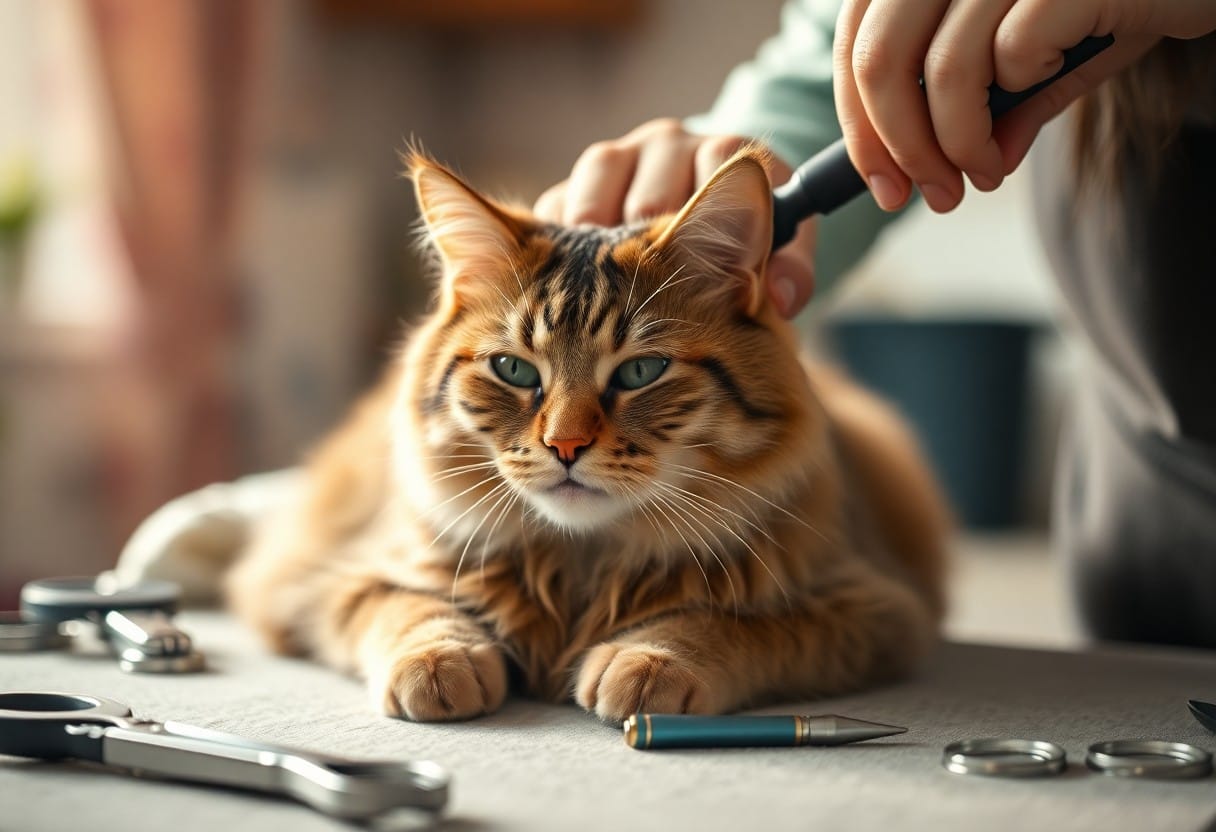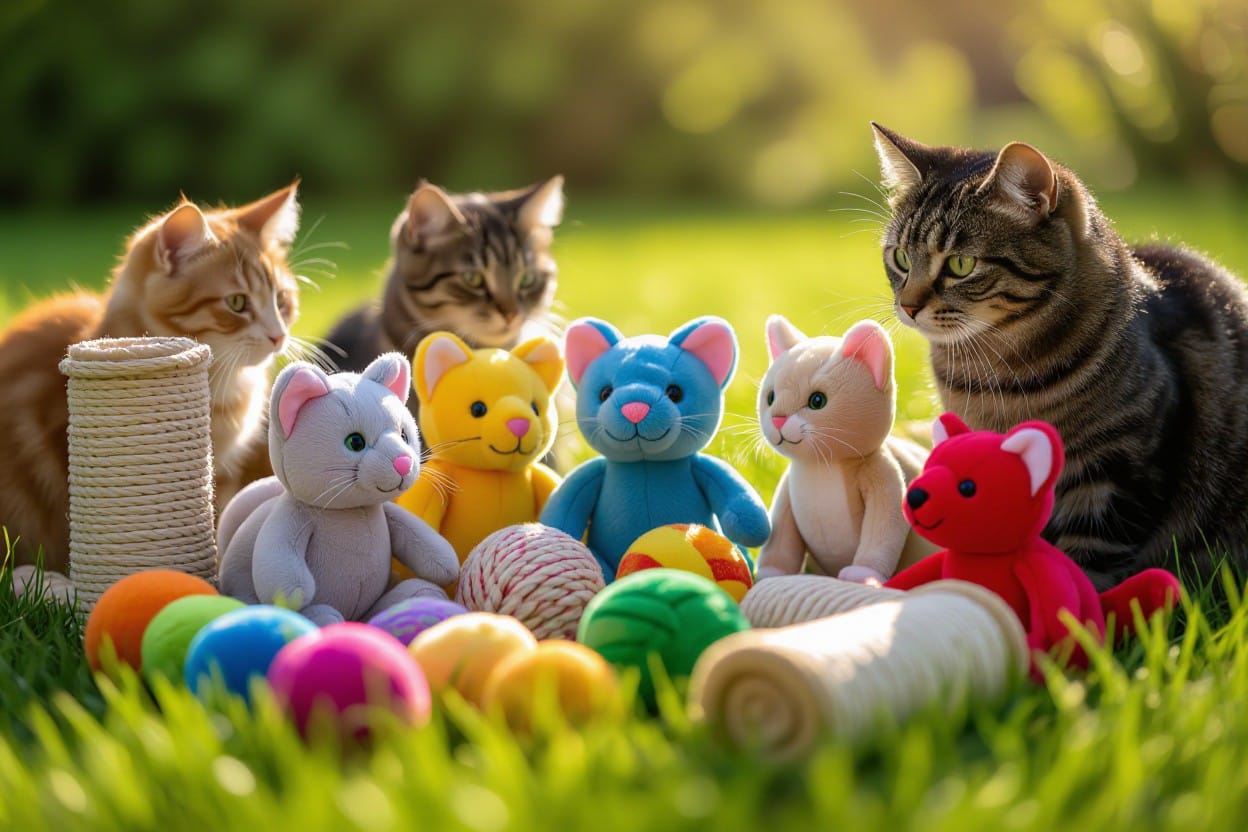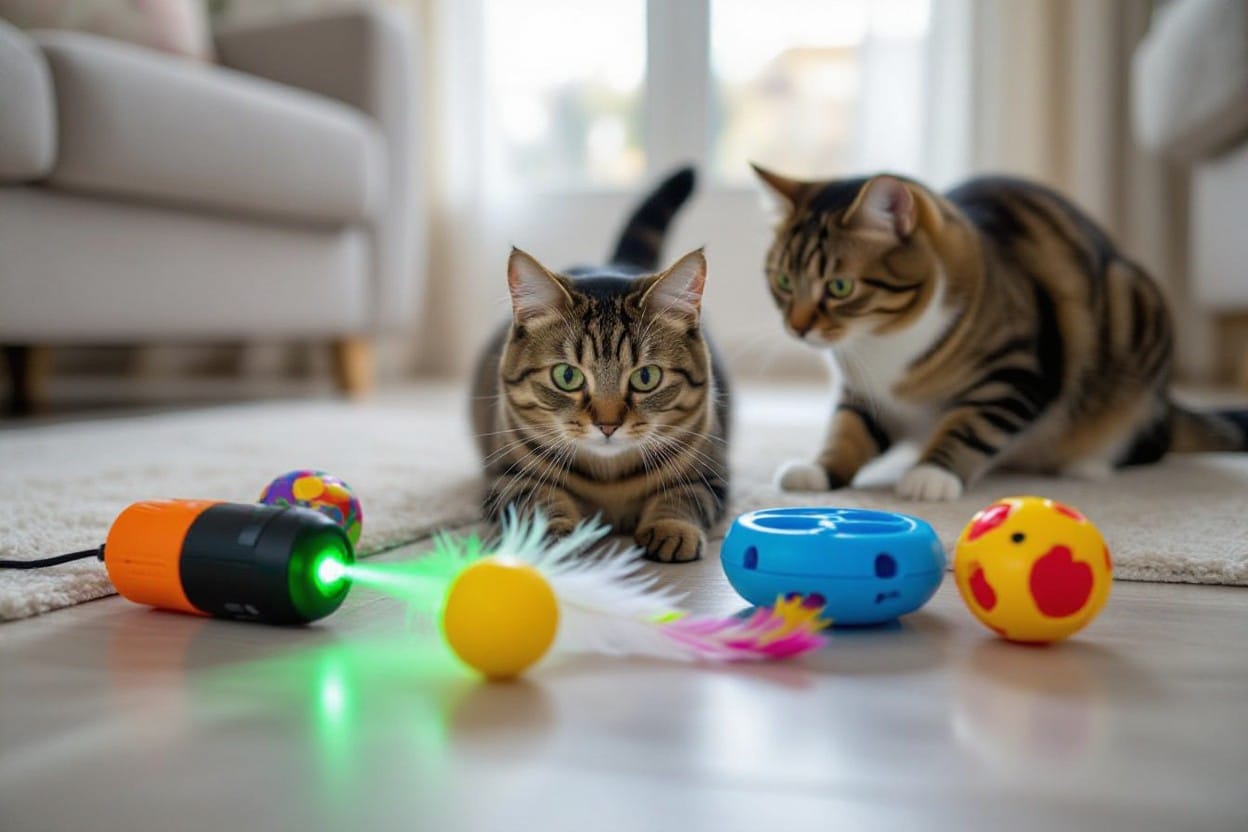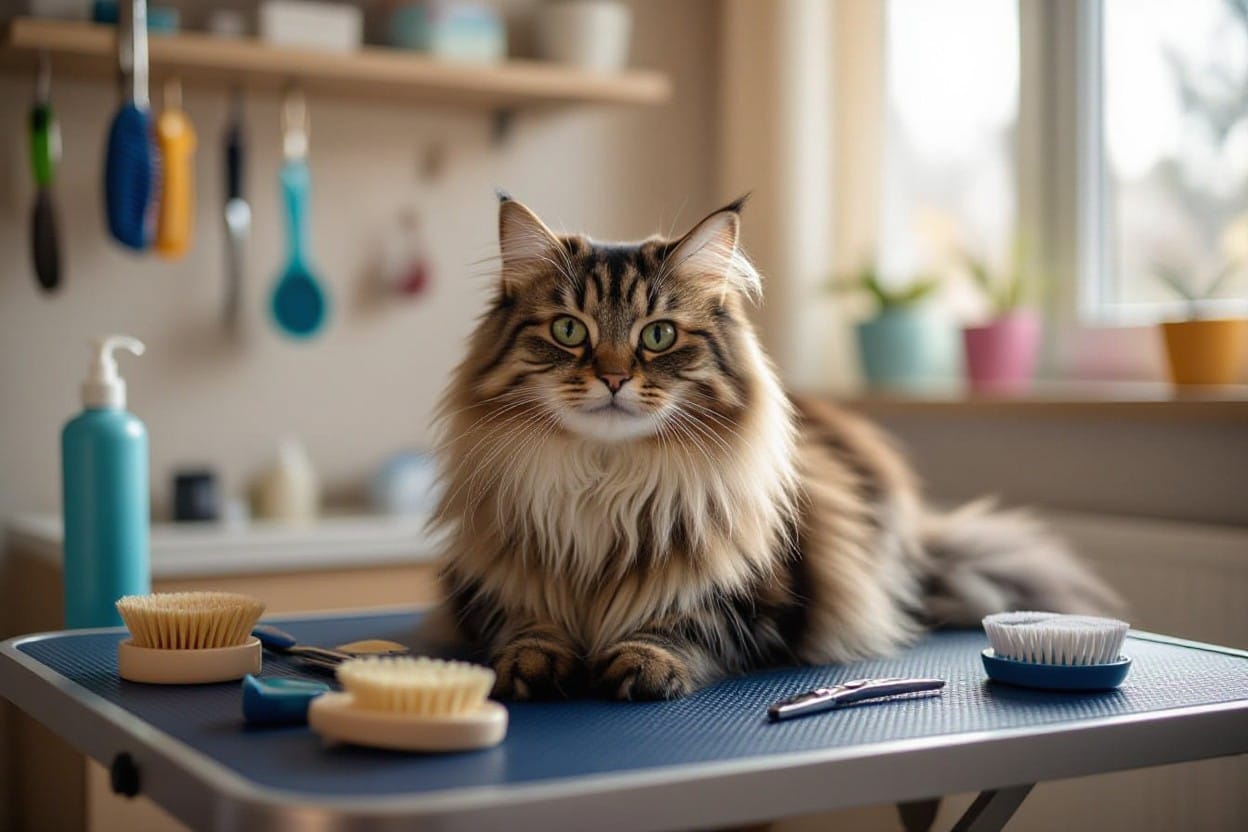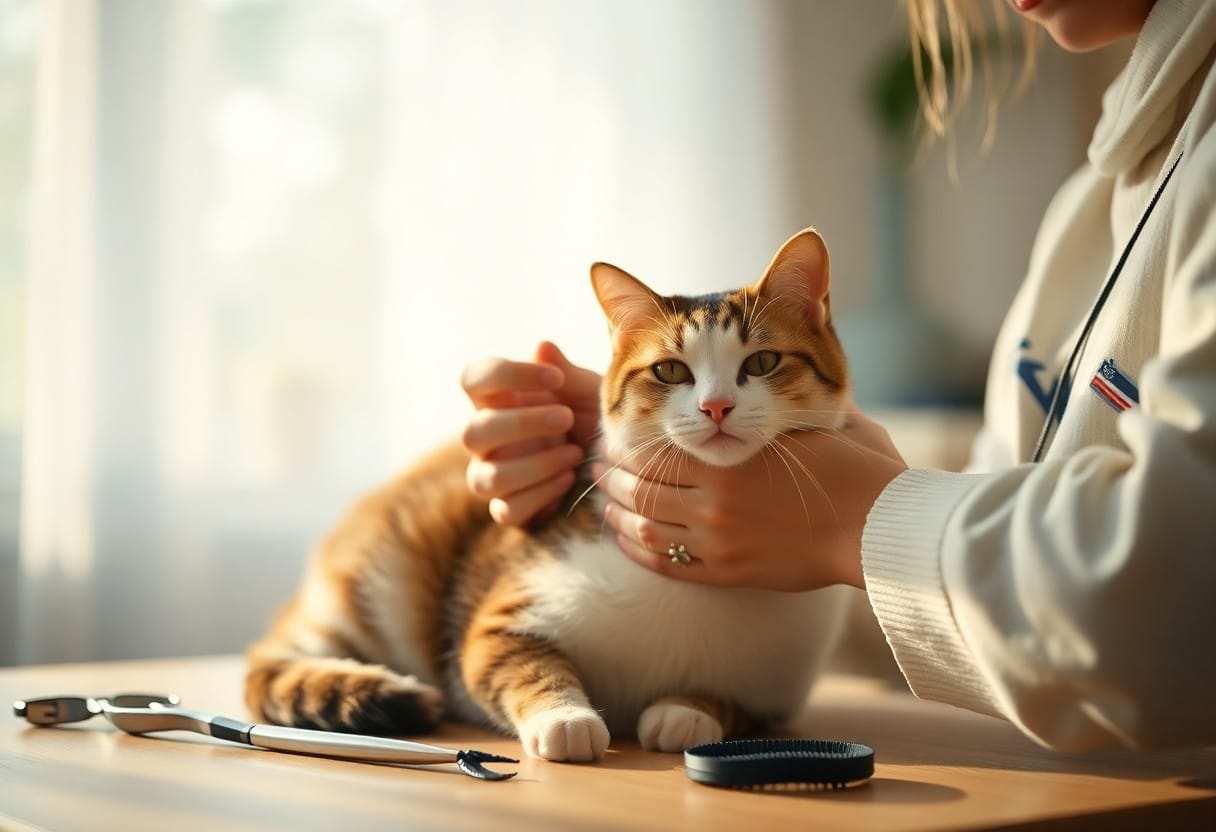Just as you enjoy a good pampering session, your cat also deserves a relaxing grooming experience. Banish the anxiety that often accompanies grooming with techniques that make it enjoyable for both you and your feline friend. By utilizing gentle tools and positive reinforcement, you can create a routine that promotes bonding and keeps your cat calm. In this blog post, we’ll explore several effective strategies to ensure that grooming becomes a stress-free part of your cat care routine, enhancing their overall well-being.
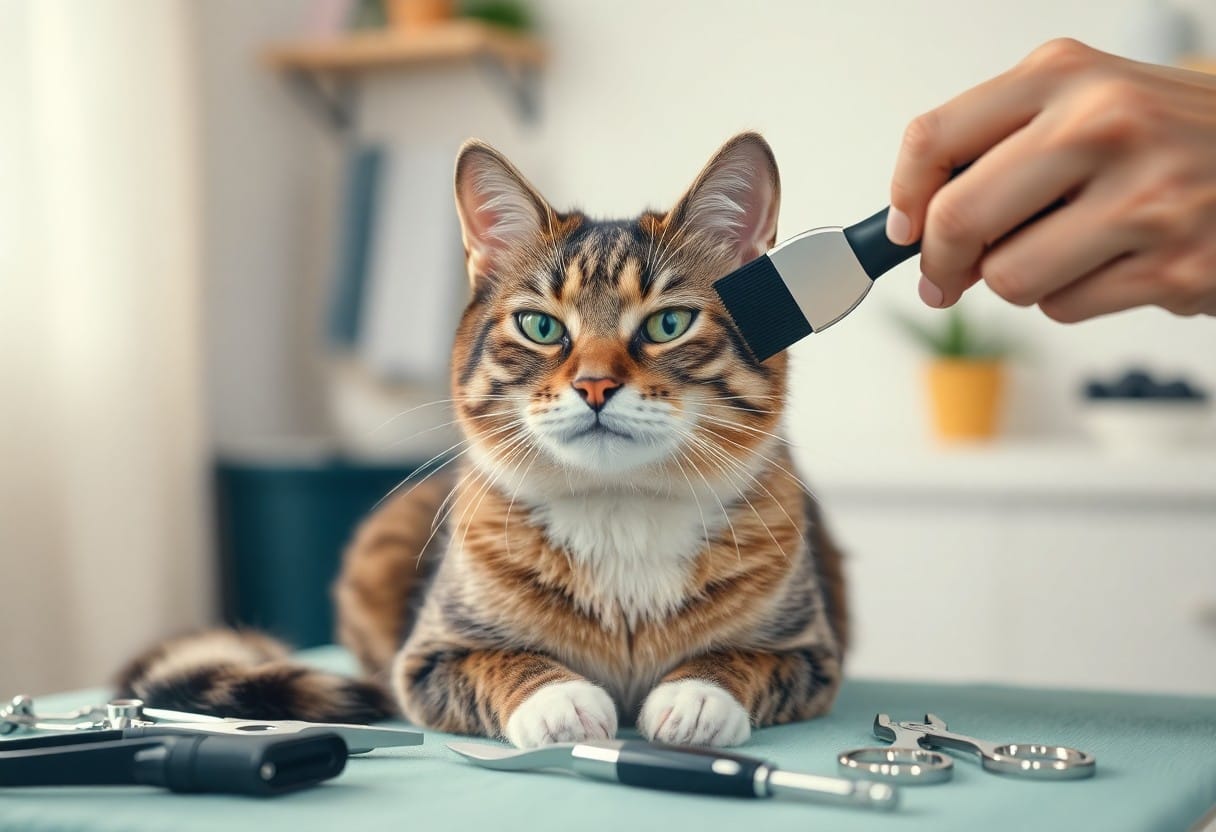
Key Takeaways:
- Establish a calming environment by using familiar scents and soft music to help your cat feel safe during grooming sessions.
- Use the right tools, like a gentle brush and nail clippers designed specifically for cats, to make the grooming process easier and more comfortable.
- Incorporate positive reinforcement, such as treats and praise, to create a positive association with grooming, encouraging your cat to cooperate over time.

Understanding Your Cat’s Grooming Needs
Before plunging into grooming techniques, it’s important to understand your cat’s unique grooming needs. Recognizing your feline friend’s specific requirements can make grooming a stress-free experience. Each cat has a different coat type and grooming needs based on breed, age, and health. Knowing these specifics will help you tailor your grooming routine effectively.
Different Coat Types
By understanding the various coat types your cat might have, you can provide the best grooming routine possible. Here’s a breakdown of different coat types:
| Coat Type | Grooming Needs |
| Short Hair | Minimal brushing, less shedding |
| Long Hair | Regular grooming to avoid mats |
| Curly Hair | Frequent brushing to maintain curl |
| Wire Hair | Specialized grooming for texture |
| Hairless | Skin care and regular cleaning |
Any cat can benefit from understanding their coat type to meet their grooming needs effectively.
Behavioral Considerations
On your grooming journey, it’s important to consider your cat’s behavior. Each cat has its personality; some may love being groomed while others may resist. Recognizing their comfort levels can minimize stress during grooming.
In fact, understanding your cat’s behavior is key to creating a positive grooming experience. Look for signs of stress, such as hiding or aggression, and adjust your techniques accordingly. Use gentle handling and reward systems to encourage acceptance of grooming. Creating a calm environment and associating grooming with positive experiences will help your cat feel more at ease during the process.
Essential Grooming Tools
Some cat grooming tasks can seem overwhelming, but having the right tools can make the process smoother and more enjoyable for both you and your feline friend. Equipping yourself with quality grooming tools will not only keep your cat looking great but can also help maintain their overall health. The following tools will elevate your grooming routine and foster a stronger bond between you and your cat.
Brushes and Combs
The right brushes and combs are important for maintaining your cat’s coat. Choose a brush suitable for your cat’s fur type, whether long-haired, short-haired, or curly, as this will enhance the grooming experience. Regular brushing helps to reduce shedding and tangles while promoting a healthy shine. Make it a point to brush your cat often to create a routine they can enjoy.
Nail Clippers and Grooming Gloves
Grooming your cat’s nails can significantly impact their well-being. Some cats may be hesitant, so choosing the right tools is important for a stress-free experience. Using sharp, high-quality nail clippers designed for cats ensures a clean cut and reduces the risk of splitting nails. Additionally, grooming gloves can be an excellent alternative, allowing you to remove loose fur while giving your cat a gentle massage. This method can help to calm your cat, making grooming a more enjoyable activity.
To successfully groom your cat’s nails, take your time and choose a quiet, comfortable space. Make sure to have styptic powder nearby in case you accidentally cut too close to the quick, which can result in bleeding. Always be gentle and patient; start by allowing your cat to sniff the clippers or gloves before gradually introducing them to the process. This approach will help build their confidence and trust in you, creating a more positive grooming experience.
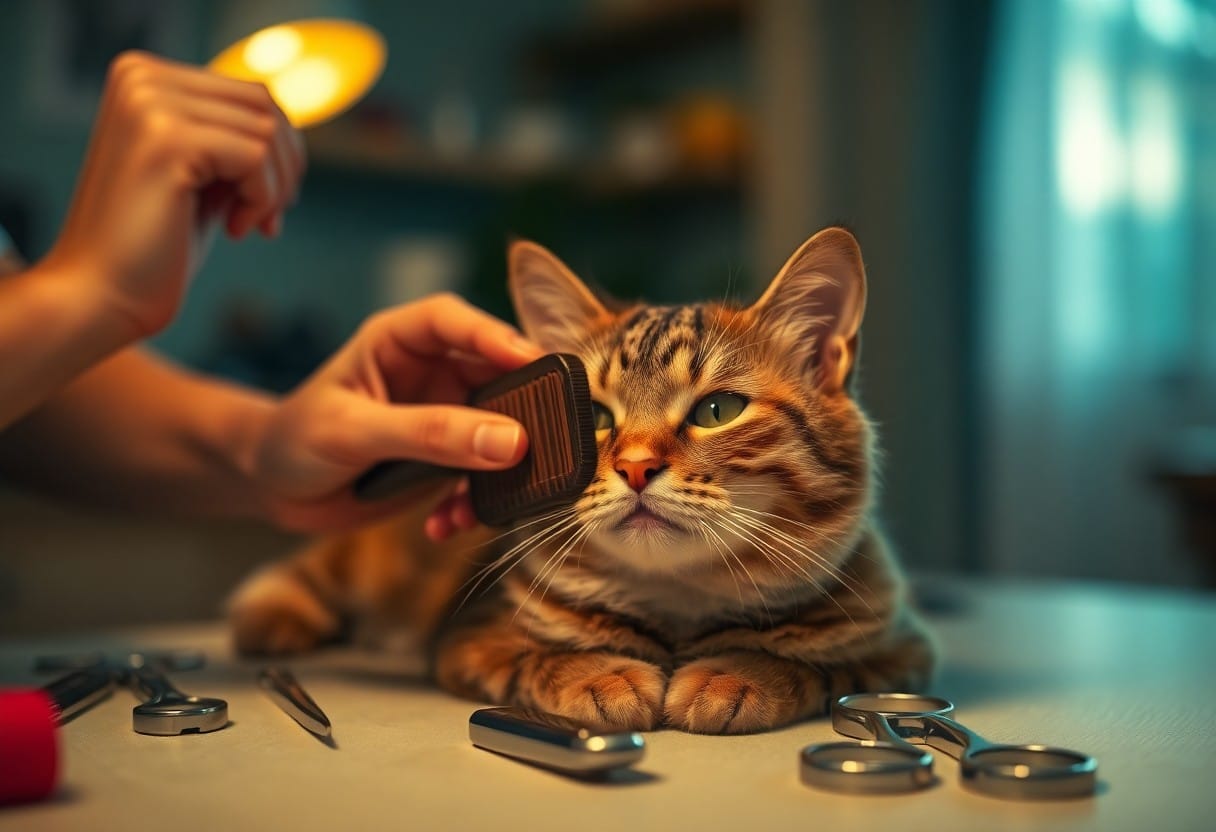
Techniques for Stress-Free Grooming
Unlike popular belief, grooming your cat doesn’t have to be a battle. By implementing a few key techniques, you can turn grooming time into a positive experience for both you and your feline friend. Focus on patience and understanding your cat’s unique needs to make the process smoother and more enjoyable.
Creating a Calm Environment
By setting the stage for a peaceful grooming session, you can significantly reduce your cat’s anxiety. Choose a quiet space with minimal distractions, ensuring that your cat feels secure. Soft lighting, soothing music, and familiar blankets can help create a cozy atmosphere where your cat can relax and feel safe.
Gradual Introduction to Grooming
Techniques for gradually introducing grooming can make a world of difference. Start by letting your cat explore the grooming tools in their own time. After your cat feels comfortable, gently stroke your cat with your hand before adding a brush. This slow approach helps build your cat’s trust and minimizes any fear associated with grooming.
Another effective method is to use short grooming sessions initially. Aim for just a couple of minutes, gradually increasing the duration as your cat gets accustomed to the process. Incorporating treats during and after grooming rewards your cat, reinforcing the idea that grooming is a positive experience. Ensure you’re observant of your cat’s body language, and if they show signs of distress, take a break. This way, grooming remains an enjoyable routine that strengthens your bond with your pet.
Bathing Your Cat: When and How
Despite their reputation for being self-sufficient, some cats may require a bath from time to time due to health or hygiene reasons. Understanding when to bathe your cat, such as when they are particularly dirty or have skin issues, will help maintain their well-being. Choose a suitable time when your cat is calm, and ensure you have all necessary supplies at hand for a smooth bathing experience.
Preparing Your Cat for a Bath
Across your preparations, make sure to choose a confined space, like a bathroom or laundry room, where you can safely control your cat. Gather supplies such as cat shampoo, towels, and a non-slip mat for added safety. Before initiating the bath, brush your cat to remove any loose fur, which also helps them adjust to the bathing process more comfortably.
Safe Bathing Techniques
Beside ensuring your cat feels secure, utilizing proper bathing techniques is imperative for a positive experience. Start by filling the tub or sink with just a few inches of lukewarm water, and gently place your cat in the water, avoiding their head initially to reduce stress. Use a cup or handheld sprayer to wet and shampoo their body, carefully avoiding their eyes and ears.
In fact, maintaining calmness during the bath is key. You want to create a positive environment to encourage your cat to cooperate. Always use a cat-specific shampoo to prevent skin irritation, and rinse thoroughly to remove all soap. Consider having a second person help you if your cat resists, as this can provide extra support. After the bath, wrap your cat in a warm towel, offering reassurance to help them transition back to a state of comfort.
Regular Maintenance and Health Checks
Many cat owners overlook the importance of regular maintenance and health checks in grooming their feline friends. These practices not only keep your cat looking their best but also help you identify any potential health issues early on. Establishing a routine can ensure that your cat stays comfortable and their coat remains healthy, reducing stress during grooming sessions.
Ear and Eye Care
Behind every happy and healthy cat is a pair of clean ears and clear eyes. Regularly check your cat’s ears for signs of wax buildup or dirt, and gently clean them with a vet-recommended solution if necessary. Similarly, keeping an eye on their tear production can help you catch any potential allergies or infections early.
Inspecting for Matting or Skin Issues
To maintain your cat’s coat, it’s vital to routinely inspect for matting or skin issues. Regularly running your hands through your cat’s fur allows you to detect any areas that may be matted or irritated.
It’s important to address matting as it can lead to skin irritations or infections. Matting traps moisture and bacteria, which can be uncomfortable for your cat. Additionally, check for any signs of redness, swelling, or excessive itching, as these could indicate skin conditions that require veterinary attention. By proactively managing your cat’s grooming needs, you help maintain their overall health and happiness.
Positive Reinforcement and Bonding
Now that you’ve set the stage for a successful grooming session, it’s crucial to incorporate positive reinforcement. By rewarding your cat during and after grooming, you not only motivate them but also enhance your bond. This method transforms a potentially stressful experience into a shared and enjoyable one, fostering trust and confidence between you and your feline friend.
Using Treats and Praise
Along with gentle grooming techniques, incorporating treats and praise can significantly improve your cat’s grooming experience. Offer small, tasty treats during breaks or after each successful grooming session, accompanied by encouraging words. This method will teach your cat that grooming leads to positive outcomes, making them more comfortable over time.
Building Trust Through Routine
Reinforcement through consistent grooming routines enables your cat to understand what to expect. By establishing a regular schedule, you help create a sense of security, making your cat less anxious about the process. Due to the predictability of the routine, your cat will likely become more relaxed and receptive over time. This predictable environment is vital as it minimizes surprises that could lead to stress or fear. Building this trust not only enhances the grooming experience but also strengthens your overall relationship with your cat. An established routine could involve gentle brushing on specific days or a calming post-grooming cuddle session, reinforcing your connection.
Conclusion
Summing up, mastering stress-free cat grooming techniques can greatly enhance your relationship with your feline friend while keeping them healthy and happy. By maintaining a calm environment, using the right tools, and establishing a regular grooming routine, you can transform what might be a daunting task into an enjoyable experience for both you and your cat. Stay patient, attentive, and consistent in your approach, and you’ll find that your grooming sessions become a bonding time, ensuring that your cat feels cared for and comfortable throughout the process.
Q: What are some effective techniques for grooming a cat that hates being brushed?
A: If your cat dislikes being brushed, start by introducing the grooming process gradually. Begin with gentle handling and allow your cat to explore the grooming tools at their own pace. Use treats to create a positive association with brushing. Instead of a regular brush, consider using a grooming glove, as it often feels more comfortable for the cat. Aim for short sessions, gradually increasing the duration as your cat becomes more comfortable. Always listen to your cat’s cues and give them breaks to avoid overwhelming them.
Q: How can I keep my cat calm during bath time?
A: Bath time can be stressful for many cats. To keep your cat calm, select a quiet and familiar space for the bath, and gather all necessary supplies beforehand to avoid leaving your cat unattended. Use lukewarm water and a gentle, cat-specific shampoo. Before the bath, you might want to brush your cat to remove loose fur and dirt. Consider using a non-slip mat in the bath to give your cat stability. Speak softly and reassuringly to your cat throughout the process, and provide treats as rewards for cooperation.
Q: What grooming tools should every cat owner have?
A: Every cat owner should have a few basic grooming tools on hand. A good quality brush is important; the choice depends on your cat’s coat type. For short-haired cats, a bristle brush or rubber grooming mitt works well, while long-haired cats benefit from a wide-toothed comb or slicker brush to prevent mats. Nail clippers or a nail grinder are important for regular nail trims. Additionally, a cat-safe shampoo is useful for the occasional bath, while ear wipes and dental care products can help maintain overall hygiene.
